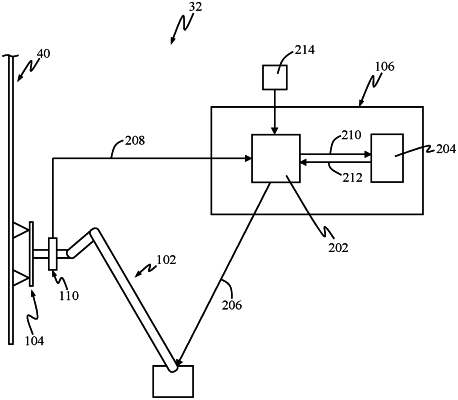| CPC C03B 17/064 (2013.01) [C03B 33/0215 (2013.01); B25J 9/16 (2013.01); C03B 17/068 (2013.01); C03B 33/0235 (2013.01); C03B 33/033 (2013.01)] | 19 Claims |

|
1. A method for forming a glass sheet comprising:
providing a robot including a robot arm, an end effector and a control system, wherein the robot arm carries the end effector, and further wherein movement of the robot arm is controlled by the control system;
flowing molten glass from a forming body in a downdraw process to form a continuously moving glass ribbon;
operating the robot arm to move the end effector through a robot operational cycle programmed to the control system, the robot operational cycle initiating at a start time, the robot operational cycle comprising:
engaging a segment of the glass ribbon with the end effector,
separating the engaged segment from a remainder of the glass ribbon to generate a glass sheet,
moving the glass sheet away from the glass ribbon,
wherein the robot operational cycle comprises predetermined positions of the end effector at predetermined points in time following the start time; and
during the step of operating:
sensing at least one parameter indicative of at least one force exerted on the glass ribbon by the end effector,
altering a position of the end effector to differ from the predetermined position at the corresponding point in time after the start time when the sensed parameter deviates from a target value via programing of the control system.
|